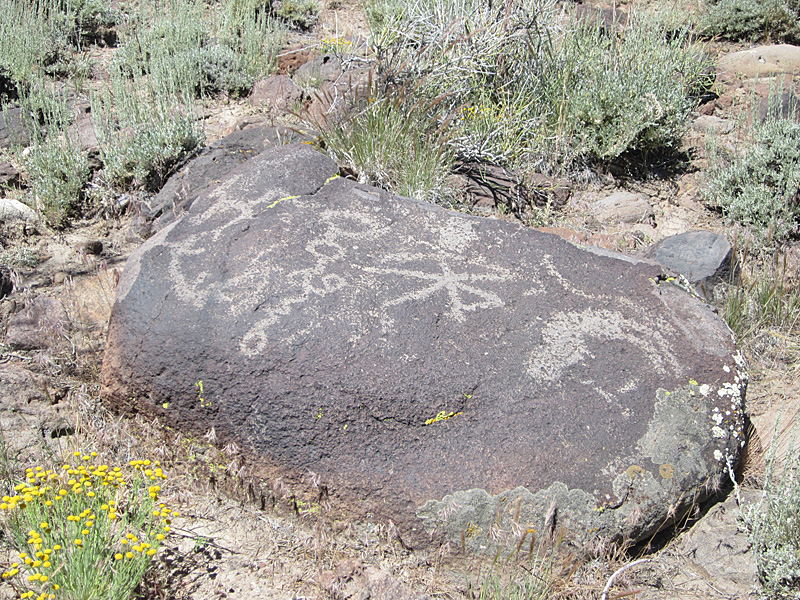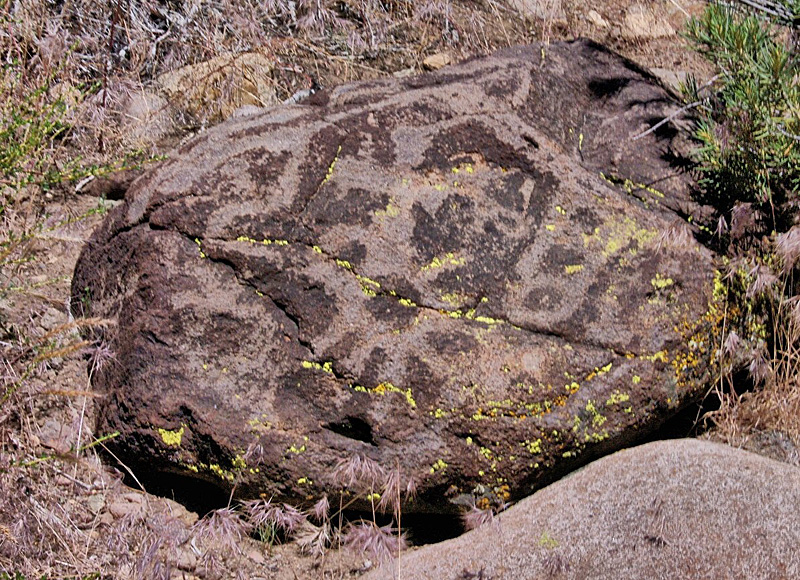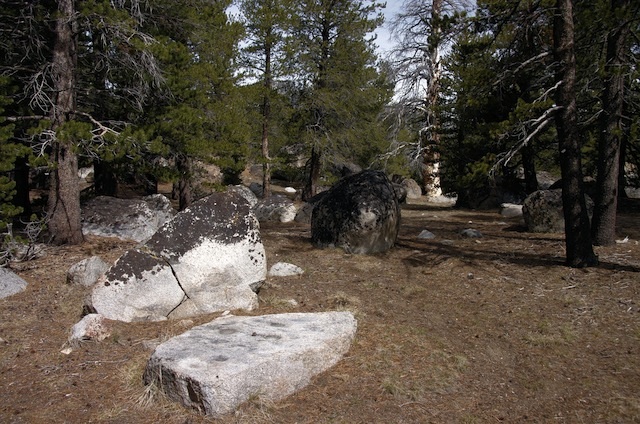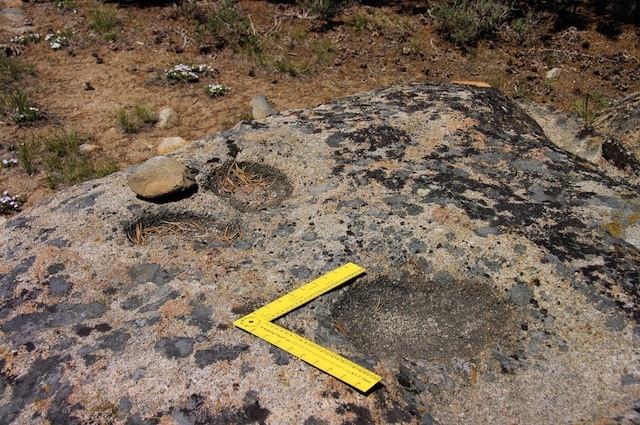THE
WASHOE PEOPLE
 For
thousands of years Washoe people have inhabited what we now call Alpine
County, Douglas Country and further north in Nevada and eastern California.
Petroglyphs, grinding rocks, slicks and other rock art are scattered
thought-out the area.
For
thousands of years Washoe people have inhabited what we now call Alpine
County, Douglas Country and further north in Nevada and eastern California.
Petroglyphs, grinding rocks, slicks and other rock art are scattered
thought-out the area.
An indigenous Native American people, the Washoe originally lived around
Lake Tahoe and adjacent areas of the Great Basin. Their tribe name derives
from the Washoe word, waashiw (wa·s¼iw), meaning “people
from here.”
Semi-sedentary hunters and gatherers, their territory extended from
the western slope of the Sierra Nevada Mountains to areas as far east
as Pyramid Lake in Nevada, including Lake Tahoe and Hope Valley. Traditionally,
they would spend their summers in the Sierra Nevada, the autumn in the
ranges to the east, and winter and spring in the valleys in between.
Their food base consisted primarily of pinyon pine nuts, roots seeds,
berries and game.
Family was and is the core of the Washoe because these are the people
that lived and worked together and relied on each other. In the past,
families are recorded as rarely fewer than five individuals and only
occasionally exceeding twelve in size. A family was often a married
couple and their children, but there were no distinct rules about how
marriages and families should be formed and households were regularly
made up of the parents of a couple, the couple’s siblings and
their children, more than one husband or wife, or non-blood related
friends.
Generally, a family was distinguished by whoever lived together in the
winter house. Winter camps were usually composed of four to ten family
groups living a short distance from each other. These family groups
often moved together throughout the year. The Washoe practiced sporadic
leadership, so at times; each group had an informal leader that was
usually known for his or her wisdom, generosity, and truthfulness. He
or she may possess special powers to dream of when and where there was
a large presence of rabbit, antelope and other game, including the spawning
of the fish, and would assume the role of “Rabbit Boss”
or “Antelope Boss to coordinate and advise communal hunts.
“The health of the land and the health of the people are tied
together, and what happens to the land also happens to the people.
When the land suffers so too are the people.”
- A. Brian Wallace, Former Chairman of the Washoe Tribe



click for larger view



